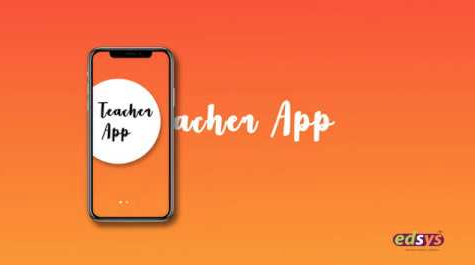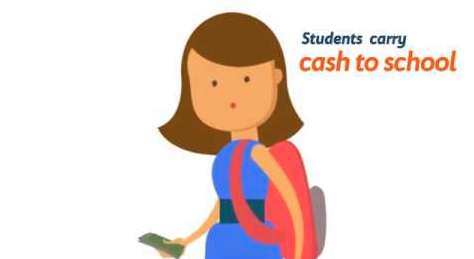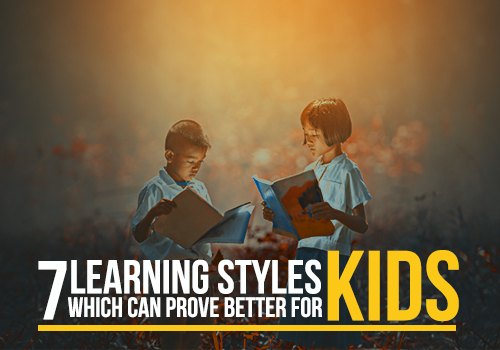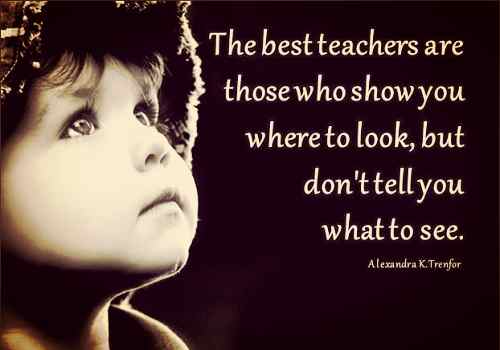Categories(658 Blogs)
Select Category
Watch Right Now
Teacher App - Class
Schedule & Attendance Management App
Parent App from Edsys

Best School Bus Tracking System

Cashless School - For Smart Schools of Tomorrow


7 Learning Styles Which Can Prove Better For Kids

When in school, you would have thoroughly enjoyed a lecture delivered by a particular teacher. Then, you would start looking forward to the class he/she takes. In contrast, you would have also experienced a monotonous teaching pattern followed by another faculty.
What makes this difference?
It could be the teacher’s attitude, energy levels, and the teaching/learning style.
The learning style in particular can prove to be very important, as it allows kids to nurture a strong liking towards the subject taught.
Here, we try to shed light on different learning styles that help students to learn better. With these learning styles in place, they will begin to love what is being taught.
The Three Basic Learning Styles
With kids having different needs towards learning, educational experts have classified learning styles into three different heads. They are:
- Visual (Spatial) 2. Auditory (Verbal) and 3. Kinesthetic (Physical)
Let us now delve deep into the above 3 important types of learning styles.
- Visual (Spatial)
First in the list of learning styles for kids is the use of images and pictures that will provide them with a clear understanding of the area, size and position of different objects. Visual learning helps kids assimilate knowledge through observation. Tagged as the most powerful learning style, visual learners are kids who have a creative perception of their surroundings. When they observe an object closely, they will be able to absorb the minutest details concerning the object. In addition to this eye for detail, visual learners demonstrate the following traits:
- They prefer to see and learn
- Visual learners remember and repeat visual details with utmost accuracy
- They are the kids who would need a pen and paper as learning aids to draw maps, diagrams and charts
- If you notice that your kid is inclined towards penning down instructions, then you can adopt the visual learning style
- A kid who is not much interested in listening can become a potent visual learner
- If demonstrations about a particular topic thrill your kid, you have a visual learner who will weave stories about what he noticed through his creative pair of eyes
Visual learners cannot be taught through verbal instructions. It is only when they begin to see what they are expected to learn that they will actually pick up the details of the subject.
- Auditory (Verbal)
True to its name, kids who love the auditory pattern of learning will be drawn towards listening attentively to what others are saying. Such kids will learn linguistics through the use of words; which can be through speaking or writing. Kids who adopt the auditory (verbal) learning style will show following characteristics:
- They will remember and recapitulate information when they recite their lessons aloud
- Kids who are attuned to a linguistic pattern of learning will learn better when they are explained orally
- Certain kids who struggle with written instructions can learn by listening
- You may also find auditory learners who talk to themselves when they are introduced to a new topic
- If your kid loves to learn through group discussions, it should ring a bell that he/she is a student made for the auditory learning style
A striking parameter that can help you identify auditory learners is through their sharp listening skills. On the face of it, such kids might seem to be least interested in what you are saying. But in reality, they will be actually putting their listening abilities to test to grasp all that they can, when you are talking to them. Kids who can learn better by paying attention to what you are saying thus have strong listening skills when compared to visual skills.
- Kinesthetic (Physical)
Also known as Tactile Learning, Kinesthetic Learning is a learning style that teaches kids through physical activities. Kids who make use of their arms and legs coupled with a keen sense of touch will develop an interest towards a particular subject. Typically treading the path of hands-on learning, it is an easy task to pick a kinesthetic leaner. He/she will be more agile with bodily movements rather than choosing to be a silent audience to a demonstration or a lecture. You as a parent or teacher can identify a kinesthetic learner if he/she mirrors the following characteristics:
- Kinesthetic learners make utmost use of their hands to learn. That means, they “interact” majorly through hand movements
- They have a strong inkling towards partaking in an activity that will help them master the topic
- They learn by touching and feeling objects of study
- Such kids are often found moving around from one place to another; talking or listening
Kids who have a mental make-up towards kinesthetic learning can sometimes be falsely classified under the category of kids with ADHD symptoms. Their inability to learn through visual or auditory means is the reason behind this erroneous classification.
There are umpteen ways to learn.
But are there only three learning styles?
No!
While the above mentioned styles come under the category of basic learning styles, there are other learning styles that can simplify the lives of students in more ways than one. All these styles which apply logic to learning can help your kid better respond to his teaching curriculum.
Let us now look into these imaginative learning styles with a brief explanation.
- The Fourth Style – A Collection of Creative Learning Styles
Under this head, you will be able to recognize unique styles of learning. They are:
- Aural(Auditory and Musical) – This is a combination of the auditory learning pattern with music. Kids who prefer to learn through music and sounds will follow a particular pattern of learning. They will listen, discuss topics with others, explain their novel ideas to others and pose questions. They use a tape recorder which will help them remember interesting jokes, stories and examples that were a part of the learning session. Recalling a pleasurable instance of a joke that was shared in the class during a lecture will help aural learners tag this instance to the topic of study.
- Logical (Mathematical): You will agree with the fact that Mathematics is a subject based on logic. Kids who are gifted with an innate ability to apply logic to every problem will be able to solve mathematical puzzles and games. Applying reasoning to every mathematical step, they will arrive at the solution; the easy way.
If your kid demonstrates an early aptitude towards solving mathematical problems, you can encourage him to check out a host of fun-filled mathematical puzzles and games that are a dime a dozen on the internet. With these online learning tools, you as a proactive guardian can develop the logical thinking in them at a very tender age.
- Social (Interpersonal): All those kids who love to make learning interesting by engaging in group activities or by interacting with other people can check out the interpersonal style of learning. Such kids demonstrate a strong grasp over linguistic and communication skills. They have a prominent social style that can either manifest in verbal or non-verbal forms. Their love for social interactions comes to the fore when they demonstrate a keen interest to participate in group learning projects.
If you notice your kid partaking in school activities like debates, drama and speeches, then you have a social learner who will garner the limelight in social gatherings as well.
- Solitary (Intrapersonal): As a sharp contrast to the social learning style, you have a group of kids who love to indulge in self-study. They go by the principle that self-help is indeed the best help they can get to expand their knowledge base. Solitary learners, true to their name prefer to work alone, giving utmost importance to their privacy during learning. They have a strong individuality along with a keen sense of independence. They go by their own thinking and spend a lot of time on self-analysis.
Intrapersonal learners are happy being away from the crowd and rely on their innate intelligence to learn new things. Internalizing their thinking patterns, solitary learners come under the category of top performers who have learned about different topics their own way.
Closing Thoughts
All in an attempt to maximize the learning potential of kids, the above learning styles will not only help guardians match the needs of their wards to a befitting style but also helps understand them better. It is only when you as guardians pay heed to your kids’ wants and interests that you will be able to handhold them to make the most of different learning styles. Observation plays an important role in this regard.
Guardians, through observation will be able to provide a host of learning opportunities to kids to hone their primary and innate skills. In this way, they can become instruments of effective learning by introducing their wards to a combination of learning styles. This effort bears fruit by prompting kids to tread the path of a scientific method of learning that becomes an asset for life.
Recent Blogs
Our Educational Services
Popular Blogs
Subscribe

SUBSCRIBE TO OUR NEWSLETTER
Sign Up and Recieve the Latest News
Don’t Worry, We Don’t SpamExplore Our Extensive Researched Educational App Directory
Visit Now














